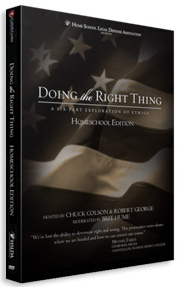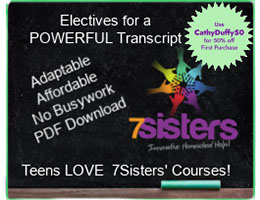Clearly, ethical lapses at all levels of society have become increasingly common. Consternation over events caused by such lapses is followed by calls for education in ethics, reflecting the common belief that ethics can be taught in class just like typing or some other skill. Doing the Right Thing challenges that belief in the first of its six presentations.
Some colleges and universities have instituted programs in ethics. Yet, Chuck Colson rejects the efficacy of such programs when they are taught through institutions that themselves reject any ultimate source of ethical foundations. This dilemma highlights the fact that ethics develop over time within each individual, informed by each person’s worldview rather than from classroom courses alone.
Chuck Colson is joined by a distinguished panel that includes Robert George, Brit Hume, Dr. David Miller, Michael Miller, and Glenn Sunshine as they explore the issue in front of a live audience at Princeton University. Taped interviews with expert guests such as Ben Stein, John Stonestreet, and Alveda King provide additional insight as they explore the issue through six sessions titled:
How Did We Get into This Mess?
Is There Truth, a Moral Law We Can All Know?
If We Know What is Right, Can We Do It?
What Does it Mean to Be Human?
Ethics in the Marketplace
Ethics in Public Life
The panelists and guests frequently reference the economic collapse of 2008, but they also discuss other current and historical events to demonstrate their points, making links from the realm of ethical ideas to reality. The panelists come from both Protestant and Catholic backgrounds, and the ideas they present reflect the common Christian foundation they share as well as a recognition of the Natural Law as normative for non-Christians.
Many different packages or individual products are available for this series, so explore your options carefully. There are kits for groups, kits appropriate for families, individual videos, audio versions of the videos, a teachers' resource guide, and participant guides. Products are available physically and digitally. I strongly recommend the video versions over the audio so that you can easily identify who is speaking when the panelists discuss topics.
The Teacher’s Resource Guide in the Homeschool Edition has extensive lesson plans that expand the approximately 30-minute video presentations with activities that can transform the videos into a full-semester course. You are welcome to pick and choose from the activities—or not use the Teacher’s Resource Guide at all—to create a course that suits your purposes.
The level of the ideas and vocabulary is ideal for college students and adults as well as for high school students in their junior or senior years, so there are many possible audiences for this series.
The downloadable guide that I received for review includes numerous weblinks to articles, videos, podcasts, and books in the public domain that are available online. Lesson plans are laid out with a logical sequence for activities. For example, for the first session, students begin by viewing an online video with Chuck Colson on “Why Ethics Matters.” They are then given links to three online articles to read. Next, they have three questions to answer based on the three articles, writing answers in a journal they create. Then they are ready to watch the first thirty-minute video presentation. This is followed by a series of six discussion questions—four of these relate to Scripture. To relate what they have been learning to current events, students then search out five articles relating to ethical issues and answer questions about views regarding right and wrong reflected in the articles. Students might also write a two- to three-page paper on the importance of trust in a market economy system. The final activity asks the teacher to role-play a relativist in conversation with the student(s) over a “moral quandary similar to that of the economic crisis.” A list of vocabulary terms and definitions and an answer key follow the lesson plan. Obviously, the teacher would have to be fairly familiar with the ideas and the material for some of these activities.
I really like the combination of activities offered in the Teacher’s Resource Guide and can envision this course working well for a mature group of home-educated students. I would also recommend the other versions of the series for adult church or educational groups.








![Doing the Right Thing - Video Download Bundle [Video Download]](https://g.christianbook.com/dg/product/web/b180/559667.gif)



